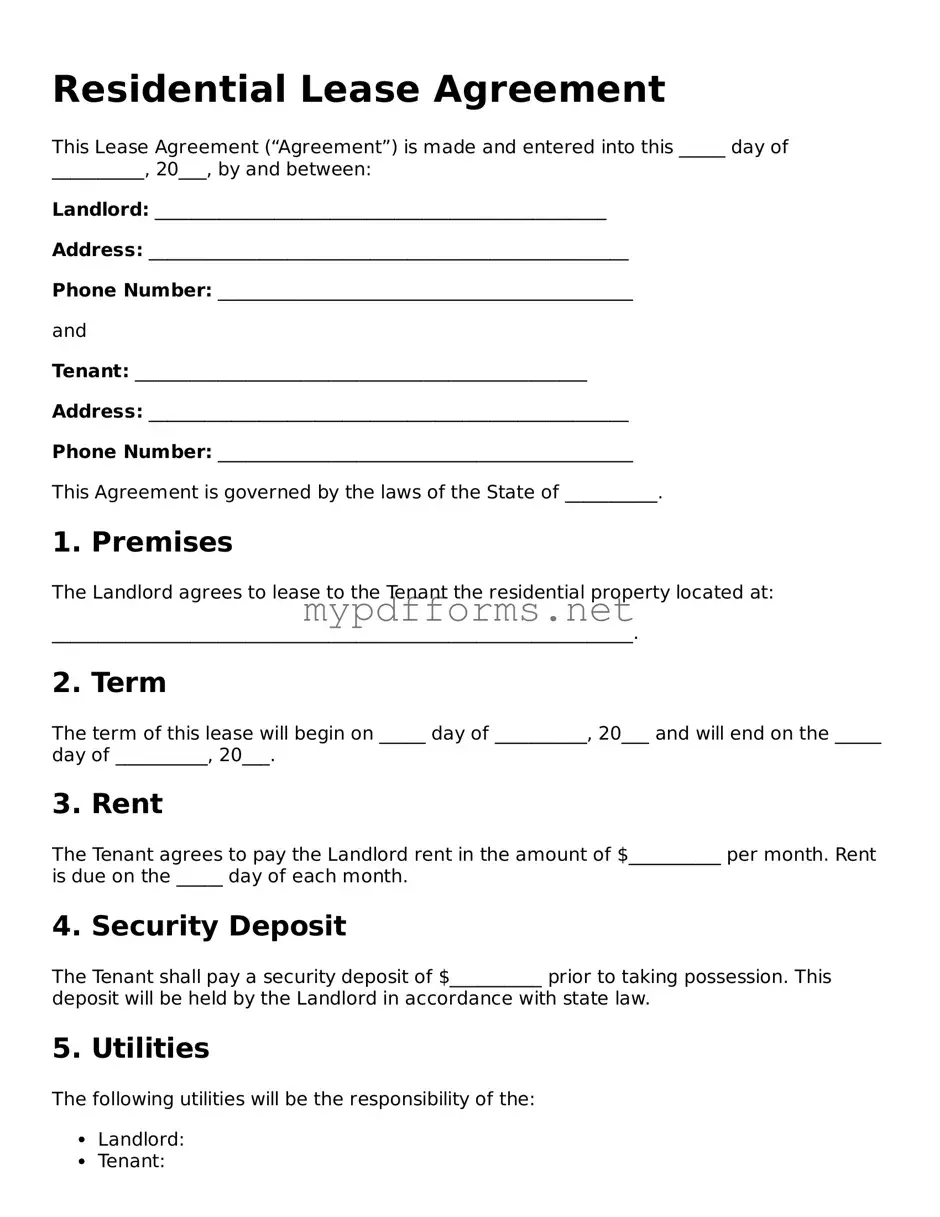A Rental Agreement is similar to a Lease Agreement but typically covers a shorter duration, often month-to-month. It outlines the terms under which a tenant can occupy a rental property. Both documents specify the rent amount, payment due dates, and responsibilities for maintenance. However, a Rental Agreement offers more flexibility, allowing either party to terminate the agreement with shorter notice.
A Sublease Agreement allows a tenant to rent out their leased property to another person. This document is akin to a Lease Agreement because it establishes terms such as rent, duration, and responsibilities. However, it is essential for the original tenant to obtain permission from the landlord before subleasing, making this agreement a bit more complex.
A Commercial Lease Agreement is used for business properties. Like a residential Lease Agreement, it outlines the terms of occupancy, including rent and maintenance responsibilities. However, it often includes additional clauses specific to business operations, such as zoning regulations and property modifications, reflecting the unique needs of commercial tenants.
A Lease Option Agreement provides a tenant the right to purchase the property at a later date. This document is similar to a Lease Agreement in that it outlines rental terms, but it also includes conditions for the purchase. This option can benefit both the tenant and the landlord, as it can secure a future sale while providing rental income in the meantime.
A Roommate Agreement is designed for individuals sharing a rental property. It outlines responsibilities such as rent, utilities, and household chores. While it resembles a Lease Agreement in establishing terms of occupancy, it is typically less formal and focuses more on interpersonal relationships and shared responsibilities among roommates.
A Tenancy Agreement is a broader term that encompasses various types of leases, including residential and commercial. It serves a similar purpose to a Lease Agreement by defining the rights and responsibilities of both the landlord and tenant. However, a Tenancy Agreement may also address specific legal requirements based on local laws, making it essential for compliance.
A Month-to-Month Lease is a type of Rental Agreement that continues until either party decides to terminate it. This document shares similarities with a Lease Agreement by specifying rent and maintenance duties. The primary difference lies in its flexibility, allowing tenants to move out with short notice, making it ideal for those who may need to relocate quickly.
A Lease Purchase Agreement combines elements of both leasing and purchasing. It allows tenants to rent a property with the option to buy it later. Like a Lease Agreement, it sets out rental terms but also includes a purchase price and timeline, making it a hybrid option for those looking to eventually own their home.
When considering a pet transaction, it’s crucial to have the right documentation in place, such as the California Dog Bill of Sale form. This form is essential for ensuring that both parties are protected during the transfer of ownership for a dog, allowing for a smooth and legally compliant process. For those interested in accessing a reliable template, visit Top Document Templates to get started.
A Property Management Agreement is established between a property owner and a management company. This document is similar to a Lease Agreement in that it outlines terms and responsibilities, but it focuses on the management of the property rather than the rental relationship. It details how the property will be maintained, how rent will be collected, and how tenant issues will be handled, ensuring a smooth operation for landlords.
